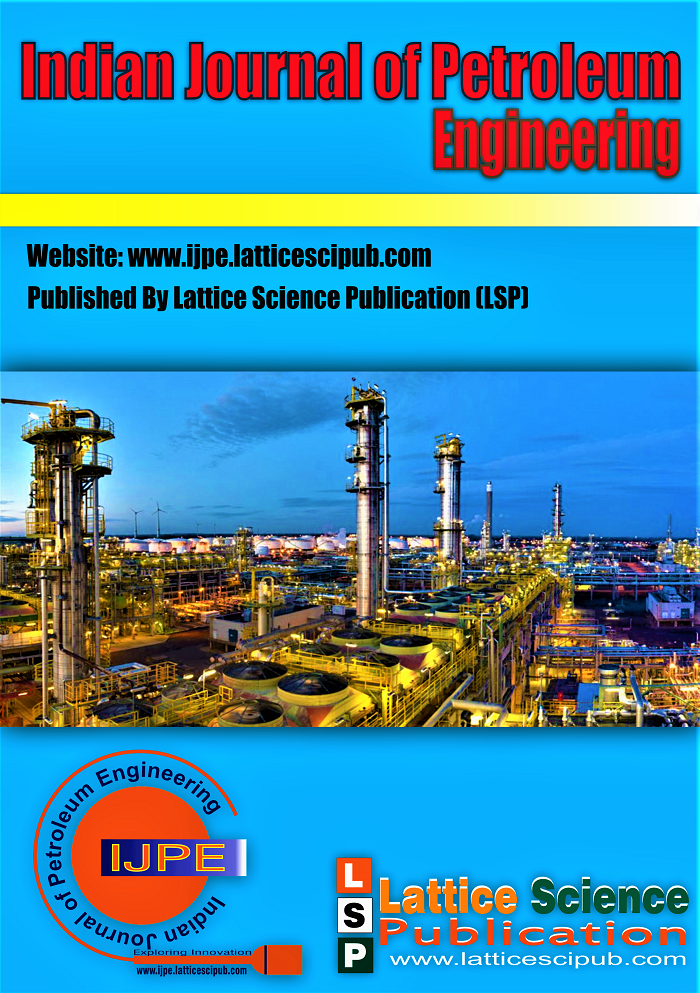Optimal Horizontal Well Placement Technology to Improve Heavy Oil Production
Main Article Content
Abstract
Optimal horizontal well placement and production optimization have been highly scrutinized. Development adjustments, such as drilling new infill wells and changing the injection/production rates of wells, can improve the performance of mature fields and leading to incremental oil recovery. Infill wells are new wells added to an existing field within original well patterns. Infill drilling can hasten oil production in heterogeneous reservoirs. If well patterns alter, fluid flow paths and sweep to areas with high oil saturations would be increased. Of course, this plan is difficult to be examined because reservoir performance is affected by many different parameters. Compared to vertical or low inclination wells, horizontal wells can deliver higher production rates, higher recovery factors and more efficient use of steam in thermally enhanced recovery projects for heavy oil. Maximum oil production is achieved when horizontal wells are placed near the bottom of the reservoir. In addition, cumulative steam to oil ratio is lowest when wells are near the bottom of the reservoir, meaning that the least volume of steam will need to be generated to produce a particular volume of oil. In this paper, the optimal horizontal well placement technology to improve heavy oil production has been studied.
Downloads
Article Details

This work is licensed under a Creative Commons Attribution-NonCommercial-NoDerivatives 4.0 International License.
How to Cite
References
Amirkabir university of technology educational sciences.2010.
Andrei Popa, Sean Connel, "Optimizing Horizontal Well
Placement Through Stratigraphic Performance Prediction Using
Artificial Intelligence". SPE-195887-MS, 2019.
Gayatri P. Kartoatmodjo, "Optimizing Horizontal Well Placement
and Reservoir Inflow in Thin Oil Rim Improves Recovery and
Extends the Life of an Aging Field", SPE-122338-MS, 2009.
https://doi.org/10.2118/122338-MS
J. Cuadros, "optimal well placement improves heavy oil
production". Schlumberger. April 2010.
Mabkhout A. Al-Harthi, "Comprehensive Reservoir Vertical
Interference Testing to Optimize Horizontal Well Placement
Strategy in a Giant Carbonate Field". SPE-178013-MS, 2015.
https://doi.org/10.2118/178013-MS
Priya Maraj, et al. "Optimal Wellbore Placement of a Penta-Lateral
Well in the Schrader Bluff Reservoir, North Slope, Alaska", SPE204468-PA, 2021. https://doi.org/10.2118/204468-PA
T. Wagenhofer, D.G. Hatzignatiou, "Optimization of Horizontal
Well Placement". SPE-35714-MS.1996.
https://doi.org/10.2118/35714-MS
Xiaodong Han, et al. "Well Placement and Control Optimization of
Horizontal Steamflooding Wells Using Derivative-Free
Algorithms",SPE-203821-PA, 2021.
Wael Fares, et al. "A New Collaborative Workflow to Optimize
Well Placement in the First Unconventional Horizontal Well in the
United Arab Emirates", SPE-192898-MS, 2018.
https://doi.org/10.2118/192898-MS
Xiang Wang, et al. "Optimization of Well Placement and
Production for Large-scale Mature Oil Fields". 2015.
Dr. V. R. Naik*, V. B. Magdum, and A. P. Borkar, “Guide Bracket
Optimization and Manufacturing Using Rapid Prototyping,”
International Journal of Innovative Technology and Exploring
Engineering, vol. 8, no. 11, pp. 161–165, Sep. 30, 2019. doi:
35940/ijitee.k1266.0981119.
https://doi.org/10.35940/ijitee.K1266.0981119
Dr. V. R. Naik*, V. B. Magdum, and A. P. Borkar, “Guide Bracket
Optimization and Manufacturing Using Rapid Prototyping,”
International Journal of Innovative Technology and Exploring
Engineering, vol. 8, no. 11, pp. 161–165, Sep. 30, 2019. doi:
35940/ijitee.k1266.0981119.
https://doi.org/10.35940/ijitee.K1266.0981119
J. J. Hilda* and C. Srimathi, “Coupling Factor and Cost Based
Task Clustering Method to Optimize Task Clustering For Scientific
Workflows in Cloud Environment,” International Journal of
Engineering and Advanced Technology, vol. 8, no. 6., pp. 4136–
, Aug. 30, 2019. doi: 10.35940/ijeat.f9288.088619.
https://doi.org/10.35940/ijeat.F9288.088619
“Optimization Method for Delay and Power Using Enhanced CSS
FLIP FLOP with 24 Transistors,” International Journal of Recent
Technology and Engineering, vol. 8, no. 6S., pp. 116–119, Mar.
, 2020. doi: 10.35940/ijrte.f1022.0386s20.





